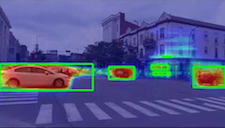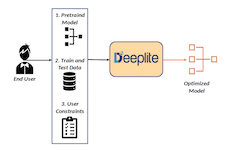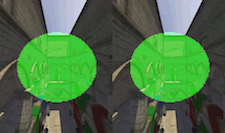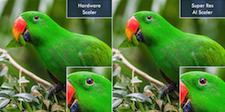| LETTER FROM THE EDITOR |
Dear Colleague,
Every year, the Edge AI and Vision Alliance surveys developers to understand what chips and tools they use to build visual AI systems. This is our seventh year conducting the survey, and we would like to get your opinions. We share the results from the Computer Vision Developer Survey at Edge AI and Vision Alliance events and in white papers and presentations made available throughout the year on the Alliance website. Results from last year’s survey are available in this white paper. I’d really appreciate it if you’d take a few minutes to complete this year’s survey. (It typically takes less than 15 minutes to complete.) We are keeping the survey open through the end of this week! Don’t miss your chance to have your voice heard. As a thank-you, we will send you a coupon for $50 off the price of a two-day Embedded Vision Summit ticket (to be sent when registration opens). In addition, we will enter your completed survey into a drawing for one of three Amazon gift cards worth $100! Thank you in advance for your perspective. Fill out the survey. On Tuesday, December 15 at 9 am PT, Yole Développement will deliver the free webinar “Sensor Fusion for Autonomous Vehicles” in partnership with the Edge AI and Vision Alliance. ADAS systems in vehicles have proven to reduce road fatalities, alert the driver to potential problems and avoid collisions. The recent availability of more powerful computing chips and sensors has enabled the development of even more advanced functions, expanding beyond safety assistance to incorporate increasingly automated driving capabilities. The implementation of these autonomous features requires the use of more sensors, more computing power and a more complex electric/electronic (E/E) system architecture. In this presentation, Yole Développement will describe the increasing need for, along with the “fusion” coordination among, sensors for autonomous devices for both automotive and industrial applications. The presentation will cover topics such as cameras, radar, LiDAR, E/E architectures and domain controllers. For more information and to register, please see the event page. And on Thursday, December 17 at 9 am PT, BrainChip will deliver the free webinar “Power-efficient Edge AI Applications through Neuromorphic Processing,” also in partnership with the Edge AI and Vision Alliance. Many edge AI processors take advantage of the spatial sparsity in neural network models to eliminate unnecessary computations and save power. Neuromorphic processors achieve further savings by performing event-based computation, which exploits the temporal sparsity inherent in data generated by audio, vision, olfactory, lidar, and other edge sensors. This presentation will provide an update on the AKD1000, BrainChip’s first neural network SoC, and describe the advantages of processing information in the event domain. For more information and to register, please see the event page. Brian Dipert |
| DEEP LEARNING INFERENCE IMPROVEMENTS |
|
Real-Time Vehicle Detection Deep Neural Network Model Optimization |
| AI FOR IMAGE ENHANCEMENT |
|
A Zero-Effort Way to Improve Image Quality Delivering on the Promise of 4K Content with AI-based Scaling |
| UPCOMING INDUSTRY EVENTS |
|
Yole Développement Webinar – Sensor Fusion for Autonomous Vehicles: December 15, 2020, 9:00 am PT BrainChip Webinar – Power-efficient Edge AI Applications through Neuromorphic Processing: December 17, 2020, 9:00 am PT |
| FEATURED NEWS |
|
Arm’s Latest Neural Network Processor Core Expands the Company’s AI IP Portfolio STMicroelectronics Introduces an All-in-one, Multi-zone, Direct Time-of-flight Module OmniVision Technologies’ New Medical RGB-IR Image Sensor Reduces Endoscope Size, Cost, Power and Heat Qualcomm Announces First Shipments of the Cloud AI 100 Accelerator and Edge Development Kit Vision Components’ Snapdragon 410-based VC DragonCam Development Board is Now Shipping |
| VISION PRODUCT OF THE YEAR WINNER SHOWCASE |
|
iniVation Dynamic Vision Platform (Best Camera or Sensor) Please see here for more information on iniVation and its Dynamic Vision Platform. The Vision Product of the Year Awards are open to Member companies of the Edge AI and Vision Alliance and celebrate the innovation of the industry’s leading companies that are developing and enabling the next generation of computer vision products. Winning a Vision Product of the Year award recognizes leadership in computer vision as evaluated by independent industry experts. |
| EMBEDDED VISION SUMMIT MEDIA PARTNER SHOWCASE |
|
EE Times |








